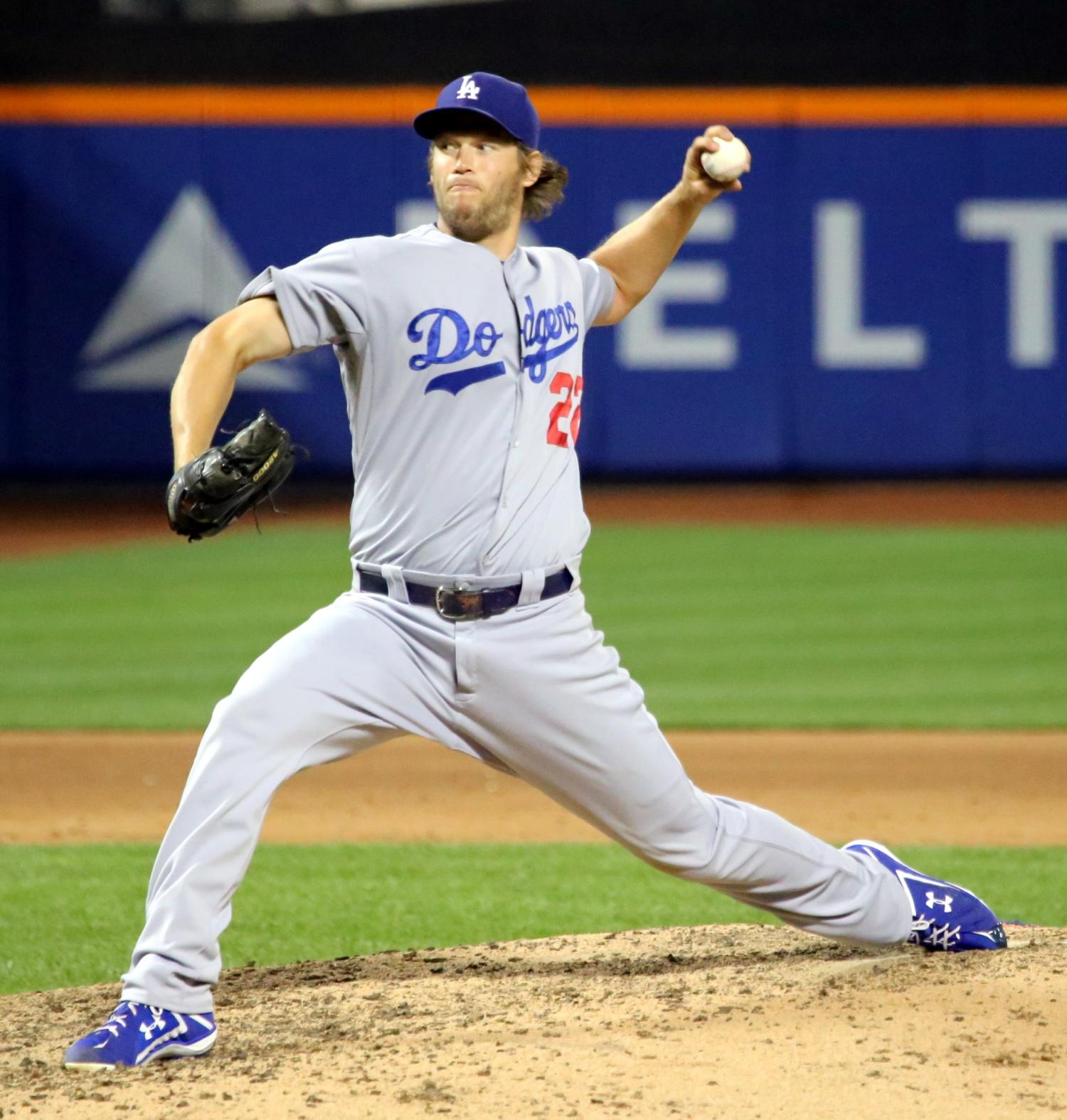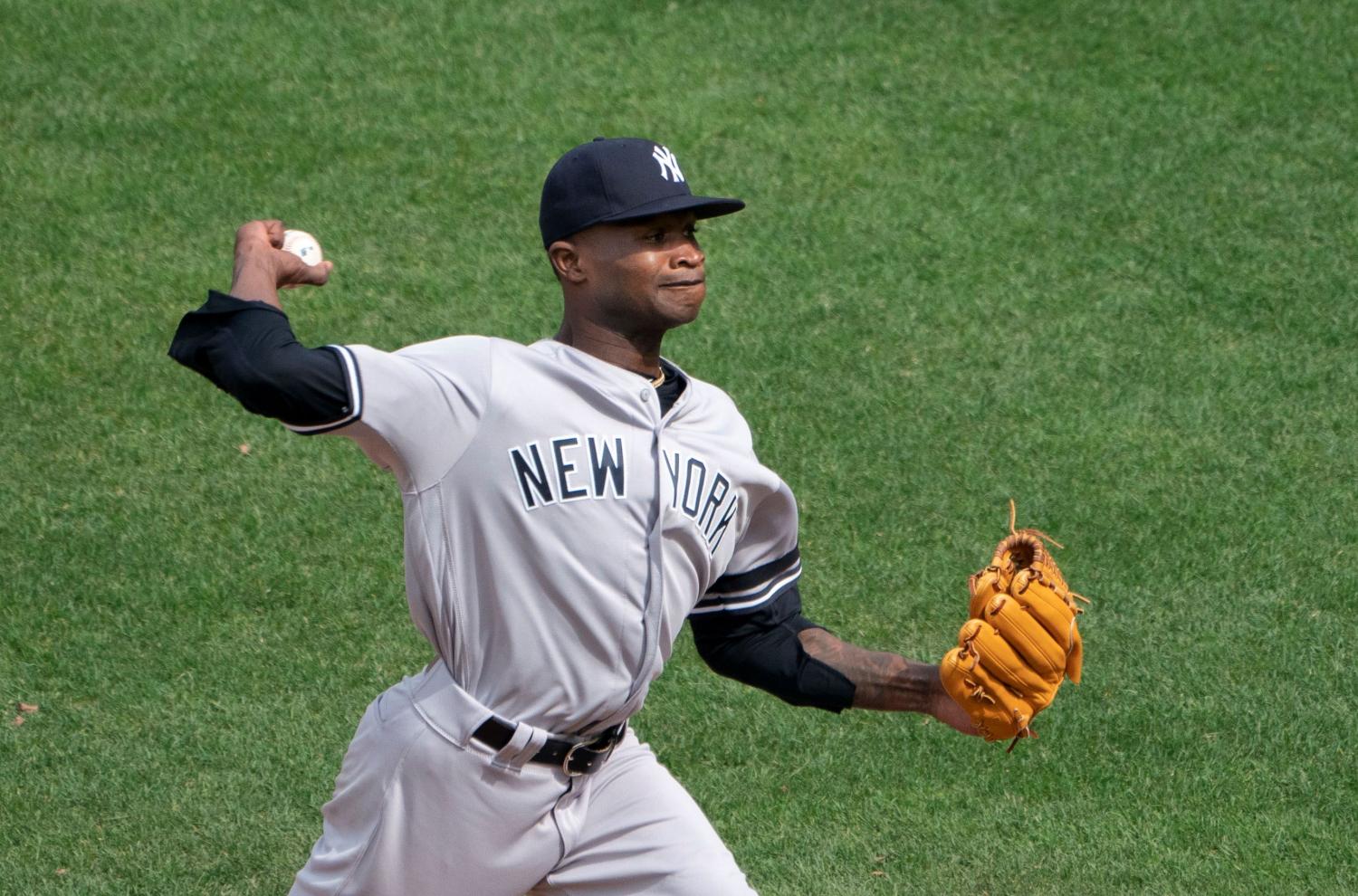Pitching perfection
Top image: Cy Young pitching (Photo: Library of Congress)
145 years after Lee Richmond threw the first perfect game in Major League Baseball, pitchers still pursue one of baseball’s ultimate achievements
Perfect (adj.): flawless, being entirely without fault or defect
The word “perfect” is not typically associated with team sports. In bowling, you can have a perfect game of all strikes, or in gymnastics we have seen perfect scores by legendary gymnasts including Nadia Comăneci and Mary Lou Retton. However, there are so many variables in team sports it is hard to define “perfection.”
One exception is baseball, in which a pitcher can step on the mound and if, after none of 27 batters reach base by a hit, walk or error, he is considered perfect.

Jared Bahir Browsh is the Critical Sports Studies program director in the CU Boulder Department of Ethnic Studies.
The National League is in the midst of its 150th season, and in those years there have been 24 recognized perfect games, the first thrown 145 years ago by Worcester pitcher Lee Richmond on June 12, 1880. The feat was repeated by John Montgomery Ward of the Providence Grays five days later, which remains the shortest time between perfect games in Major League history. It would be 24 years before a third perfect game occurred in 1904, a year after the World Series was first played between the National League and American League, which had been formed in 1901.
When Richmond and Ward threw their perfect games, baseball looked much different. Pitchers were required to throw underhand 45 feet from the plate and batters could request the height of the pitch, with umpires determining whether the pitch was “unfair” and batters getting up to seven balls before walking, reduced from nine before 1880.
In 1893, pitching moved toward its modern form as the pitchers were required to throw from a slab 60 feet, 6 inches away from home plate, the current distance between pitchers and home plate. Still, it would take another 11 years for the next perfect game to be thrown, as young pitchers had to be trained on the standardized distance and throwing motion.
As the calendar turned to the 20th century, the American League was established as a “major league” in 1901 before Major League Baseball was created through the National Agreement in 1903. In the season following the first World Series in 1903, a pitcher for the defending champion Boston Americans (who changed their name to the Red Sox in 1908) threw the first perfect game in the World Series era against the Philadelphia Athletics. The pitcher, Cy Young, is considered the father of modern pitching, and in 1956 Major League Baseball began awarding the top pitcher in baseball the Cy Young Award before expanding it to the best pitcher in each league in 1967.
Before World War II, there were only three perfect games thrown, and none in the regular season, including Charlie Robertson’s 1922 perfect game for the Chicago White Sox. More than 40 years later, Jim Bunning pitched a perfect game in 1964 for the Philadelphia Phillies. In between, Yankee Don Larsen threw the only perfect game in World Series history in 1956 against the Brooklyn Dodgers, beating a team that included the first Cy Young award winner, Don Newcombe.
Two more perfect games capped off the 1960s: Sandy Koufax for the Los Angeles Dodgers in 1965 and Catfish Hunter for the Oakland Athletics in 1968. Hunter’s perfect game occurred in the midst of what became known as the year of the pitcher, one of the most dominant years of pitching in baseball history, when pitchers dominated with a league ERA of 2.98 (4.07 in 2024) and an average of 6.8 total runs scored per game (8.8 in 2024).
As a result of this domination, MLB lowered the pitching mound and tightened the strike zone to make it more difficult on pitchers. A higher mound allows more force as pitchers step down into the pitch, while a tighter strike zone makes it easier for hitters to take balls, induce walks and wait for better pitches. Much like the rule changes in the late 19th century, the leaders of professional baseball were concerned about the lack of hits contributing to reduced interest from fans. Sports are entertainment businesses that often adjust rules to encourage more offense and create more engaging experiences.

Los Angeles Dodgers pitcher Clayton Kershaw (here pitching a July 2015 game against the New York Yankees) saw his 2014 perfect-game bid halted by an error. (Photo: Arturo Pardavila/Wikimedia Commons)
MLB wasn’t the only league to make changes to encourage more scoring: The NBA introduced the 24-second clock in 1954 after several seasons of boring, low-offense—and thus low-scoring—games, including a 19-18 game between the Fort Wayne Pistons and Minneapolis Lakers in 1950. College football legalized the forward pass in 1905 to encourage a faster pace of play and reduce head-on collisions, and the NHL reduced allowable goalie pad size in 2018 to encourage more goal scoring, the same year the NBA shifted rules again to limit the amount of contact defensive players can make and quicken the pace of play.
Rule changes = fewer perfect games
The lowered mound in 1969 is just one example of these rule changes that increase offense and make it harder for pitchers to achieve a perfect game. Similarly, in 1920, MLB made it illegal for pitchers to scuff the ball or use foreign substances that could affect how it moves in the air; the ball was also switched out at the first sign of wear, which allowed batters to see the ball more easily and made it more difficult for pitchers to manipulate its movement. These changes contributed to only one perfect game between 1920 and the 1956 World Series.
After the mound was lowered, there would not be another perfect game until 1981, meaning there were no perfect games in the 1970s. But in this time another rule was introduced that created another obstacle to a perfect game: the designated hitter in the American League in 1973. Historically, pitchers have been below-average hitters and often considered an easy out, so eliminating their presence in the lineup allowed for another skilled hitter to challenge perfection. The National League adopted the designated hitter in 2022.
Along with rule changes, strategy has also shifted significantly on the mound and in the batter’s box. Pitchers are pitching harder and throwing more breaking balls, which wear on the arm and lead to fewer complete games. In 1921 there were 1,827 complete games out of 3,553 total, meaning pitchers completed more than half the games they started. In 1968, out of 3,250 started games, 897 were completed (27.6%), while in 2024, of the 4,828 games started, only 28 were completed by the same pitcher (.58%). The desire to protect topline pitchers, and the increased reliance on talented relievers, has led to shorter outings for starters.
The changes in throwing style have led to a rise in strikeouts, which is a shift from the past when pitchers aimed more for contact and shorter at-bats. In 1988, there were about 5.6 strikeouts per nine innings pitched; in 2024 that number jumped to 8.6 strikeouts per nine innings pitched. This has also led to longer at-bats, raising pitch counts; in 1988, there were 136.2 total pitches per game and 3.59 per at-bat. In 2024, there were 146 pitches per game, or 3.88 pitches per at-bat.
In 1991, MLB formalized the definition of a perfect game to include only those games in which the pitcher throws at least nine innings without a batter reaching base, completes the game and wins the game. After that ruling, several games, including Harvey Haddix’s performance in 1959 when he pitched 12 perfect innings before losing in the 13th, was removed as a perfect game from the record books.
Walk, strikeout or home run
Batters have also contributed to this rise as they take more pitches and embrace the “three true outcomes”: walk, strikeout or home run. For a long time, walks were undervalued until analytics proliferated the game, popularizing a player evaluation strategy utilized by teams like the Oakland A’s and described in Michael Lewis’s 2003 book, Moneyball. The book follows the 2002 A’s as they won 103 games with a $44 million payroll—matching the win total of the Yankees, who had a payroll of more than $125 million. With more batters willing to take pitches—and walks—pitchers are forced to throw more.

Since 2012, the only perfect game was thrown by Domingo Germán (here pitching a 2019 game against the Baltimore Orioles) in 2023. (Photo: Keith Allison/Wikimedia Commons)
Also encouraging this protection of pitchers is the expansion of the playoffs and MLB introducing the five-game league championship series in 1969. This happened after each league added two teams, expanding professional baseball from 20 to 24 teams and with each league split into two divisions. Previously, the team with the best record in each league won the pennant and met in the World Series.
Baseball expanded its playoffs to four teams in each league in 1995, five teams in each league in 2012 and six teams in each league in 2022. This placed less emphasis on the regular season, and managers became more protective of pitchers to ensure their availability for the playoffs, leading to shorter outings. In fact, the only two times pitchers have been pulled from a perfect game have been in the last decade: in 2016 because of a blister and in 2022 when L.A. Dodger Clayton Kershaw was removed after seven innings. Dave Roberts, the manager of the current defending champion Dodgers, was the manager for both of those games.
Although the ebbs and flows of perfect games may be attributable to changes in rules, strategy and season format, there are a number of other variables beyond any pitcher’s control. Weather conditions can dramatically alter the path to perfection. The ball travels farther during warmer months, leading to more home runs. Only five of the 24 total perfect games occurred in July or August. Lower humidity and altitude also affect the ball, as it travels farther when the air density is lower, which is why the Colorado Rockies began to place balls in a humidor to combat the high rates of home runs being hit at Coors field. Rain or wetter conditions can make it harder for a pitcher to grip the ball, and in the summer, sweat can have the same effect.
With all of these factors, there is also a significant amount of luck in achieving a perfect game. There have been 326 no-hit games pitched in Major League history, with Nolan Ryan throwing seven of those, but with no perfect games in his career. Unlike a perfect game in bowling, perfection in baseball relies on other humans, including the pitcher’s defense. Nine perfect games have been made imperfect by errors—notably, a perfect-game attempt by Jonathan Sanchez in 2009 and, most recently, Clayton Kershaw’s bid in 2014. Human error is not reserved to fielders, as umpire Jim Joyce erroneously called the 27th batter safe, ending Armando Gallaraga’s perfect game attempt on June 2, 2010. Gallaraga completed his one-hitter, or “28-out perfect game” on the following at-bat.
This luck is also exemplified when we see a run of perfect games. Sanchez and Gallaraga’s flirtation with perfection occurred between 2009-2012, when there were six perfect games, with three occurring in 2012 alone (Sanchez’s and Gallaraga’s bids occurred fewer than two weeks after another perfect game). The first perfect game of 2012 was thrown by Phillip Humber, who started 51 total games in his career and finished 2012 with an ERA of 6.44, showing how just one good day can lead to baseball immortality.
Since 2012, the only perfect game was thrown by Domingo Germán in 2023. Germán has started seven games since his own perfect day with the Yankees.
Jared Bahir Browsh is an assistant teaching professor of critical sports studies in the CU Boulder Department of Ethnic Studies.
Did you enjoy this article? Subscribe to our newsletter. Passionate about critical sports studies? Show your support.

